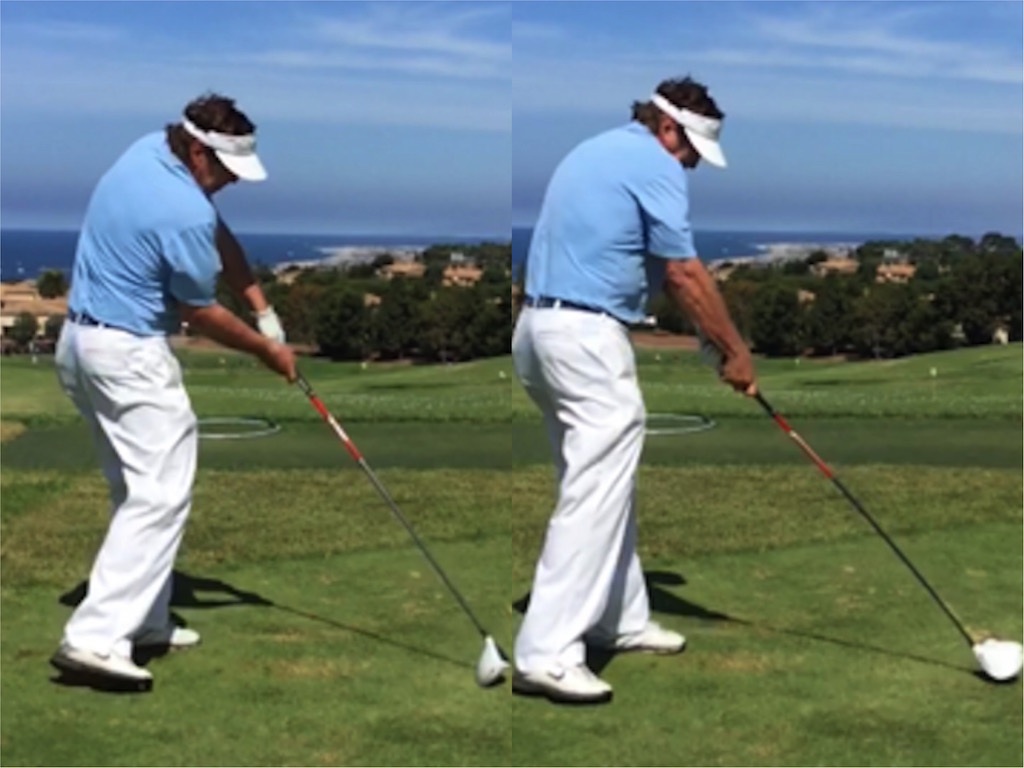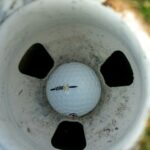So, you’ve heard the term “golf practice swing” thrown around, but you’re not quite sure what it means or why it’s so important. Well, fear not, because in this article, we’re going to unravel the mystery behind the golf practice swing and why it’s an essential tool for any golfer. Whether you’re a beginner just starting out or a seasoned pro looking to polish your skills, understanding the purpose and effectiveness of a golf practice swing will undoubtedly take your game to new heights. Join us as we explore the ins and outs of this crucial technique and uncover how it can make all the difference in your golfing journey. A golf practice swing is a fundamental aspect of the game, often overlooked by beginners and experienced players alike. It is a simulated golf swing taken without hitting a ball, allowing golfers to focus on their technique, form, and muscle memory. By regularly incorporating practice swings into your golf routine, you can improve your overall game and enhance your swing consistency.

Overview of a Golf Practice Swing
A golf practice swing is essentially a rehearsal of the full swing that a golfer uses to hit the ball. It involves going through the same motions and positions as a regular swing, but without actually striking the ball. By taking the time to practice your swing mechanics and fundamentals, you can develop better control, consistency, and power.
Importance of Practicing Golf Swings
Practicing golf swings is crucial for golfers of all skill levels. It allows you to refine your technique, build muscle memory, and develop a consistent swing. Professional golfers and instructors emphasize the significance of a regular practice routine to improve overall performance on the course. By investing time and effort into your practice swings, you can enhance your golfing abilities and ultimately lower your scores.
Purpose of a Golf Practice Swing
The primary purpose of a golf practice swing is to refine and reinforce the correct mechanics necessary to achieve an efficient and powerful swing. By taking deliberate, focused practice swings, you can develop the muscle memory and repetition needed to consistently execute proper swing mechanics. This repetition translates into increased swing consistency, improved control over the clubface, and ultimately better results on the golf course.
The Mechanics of a Golf Practice Swing
To execute an effective golf practice swing, it is essential to understand and master the mechanics involved in each phase of the swing.
Grip and Stance
The grip and stance are crucial foundations of a successful swing. Properly gripping the club and aligning your body in the correct stance ensures stability and control throughout the swing. It is important to maintain a relaxed grip and a balanced stance, allowing for maximum power and accuracy.
Backswing
During the backswing, the golfer rotates their body and club away from the target. This phase involves the turning of the shoulders, the hinge of the wrists, and the loading of power in the coil. The backswing sets the stage for the downswing and impacts the club’s path and position at impact.
Downswing
The downswing is the crucial phase that transitions the power built in the backswing into the actual swing. It involves the transfer of weight from the back foot to the front foot, the rotation of the hips, and the controlled release of stored energy. The correct sequencing and timing of the downswing directly impact the club’s path, speed, and impact point with the ball.
Follow-through
The follow-through is the final phase of the golf swing and occurs after striking the ball. It involves the continuation of the swing’s motion, allowing the club and body to naturally flow to a balanced and complete finish. The follow-through reflects the quality and acceleration of the swing and can provide valuable feedback on the execution of the previous swing mechanics.

Types of Golf Practice Swings
There are several different types of golf practice swings, each focusing on specific aspects of the game. Incorporating a variety of practice swings into your routine can help you develop a more well-rounded game.
Full Swing
The full swing practice involves executing a swing as if hitting a regular shot with maximum power and distance. It allows you to work on all aspects of your swing mechanics and is particularly useful for improving overall strength and swing consistency.
Half Swing
The half swing practice focuses on shorter, controlled swings, often used for approach shots or when more accuracy is required. It allows you to work on your tempo, timing, and clubface control, helping develop a consistent and repeatable swing for various distances.
Chip Shot
The chip shot practice is essential for honing your short game skills. It involves taking small, controlled swings around the green, allowing you to land the ball softly and accurately onto the putting surface. Practicing chip shots can greatly improve your ability to get up and down from tricky lies and save crucial strokes.
Pitch Shot
The pitch shot practice involves hitting higher, lofted shots with controlled distance and accuracy. Practicing pitch shots can help you improve your touch around the green, enabling you to navigate obstacles and tighter pin positions.
Bunker Shot
The bunker shot practice focuses on developing proficiency in getting out of sand traps. It involves proper technique in hitting sand first and then the ball. Practicing bunker shots allows you to improve your ability to escape difficult sand lies and recover from challenging bunker positions.
Putting Stroke
The putting stroke practice is vital to perfecting your skills on the green. It involves a smooth and consistent motion, focusing on accuracy, distance control, and reading greens. Regular practice of putting strokes enables you to develop a reliable and confident stroke, leading to lower scores.
Benefits of Regular Golf Practice Swings
Regularly incorporating practice swings into your golf routine offers numerous benefits that can significantly enhance your game. Some of the key advantages include:
Improved Muscle Memory
By consistently practicing your swing mechanics through practice swings, you develop muscle memory, allowing you to repeat the correct movements effortlessly. This repetition reinforces proper technique and helps eliminate swing flaws and inconsistencies.
Enhanced Swing Consistency
Practicing golf swings regularly promotes swing consistency, reducing the likelihood of errant shots and improving overall shot quality. Through repetition and deliberate practice, you become more familiar with your swing and can make necessary adjustments or corrections to maintain a consistent swing pattern.
Better Clubface Control
Practice swings enable you to work on controlling the clubface at impact, leading to improved accuracy and ball flight. By developing a better understanding of how the clubface moves through impact, you can make subtle adjustments to control the path and face angle, ultimately resulting in straighter shots.
Increased Power and Distance
Regular practice swings help build strength and flexibility in the necessary muscles for an effective swing. Improved swing mechanics and increased clubhead speed lead to more power and longer distances off the tee, giving you a competitive advantage on the course.
Reduced Risk of Injury
Practicing proper swing mechanics through practice swings helps reduce the risk of injury. By ensuring that your body movements are fluid and balanced, you minimize the strain on your joints, muscles, and back. A well-practiced swing also helps prevent overcompensation or compensatory movements that can lead to injury.

Tips for Effective Golf Practice Swings
To maximize the effectiveness of your golf practice swings, consider implementing the following tips:
Set Specific Goals
Before stepping onto the practice range, set specific goals for each session. Whether it’s working on a specific aspect of your swing or improving your short game, having a clear objective helps you focus your efforts and track your progress.
Focus on Technique
When practicing, prioritize proper technique over hitting the ball for distance or accuracy. Focus on maintaining good form, tempo, and rhythm throughout your swing. Slow down your swing if necessary to ensure that you are executing each phase correctly.
Use Training Aids and Tools
Utilize training aids and tools that can enhance your practice sessions. Items such as alignment sticks, swing trainers, and impact bags can provide immediate feedback and help you develop better swing mechanics. Consult with a golf professional to identify the appropriate training aids for your specific needs.
Practice Different Shots
Vary your practice sessions by practicing different types of shots. Incorporate full swings, short game shots, and putting strokes into your routine. This diversity helps you become a well-rounded golfer and improves your ability to adapt to different on-course situations.
Maintain a Consistent Routine
Establishing a consistent practice routine is key to ingraining proper swing mechanics and building muscle memory. Make a commitment to practice regularly, even if you are short on time. Consistency is more important than the duration of each practice session.
Analyze and Adjust
After each practice swing, take a moment to analyze your swing and identify areas for improvement. Use video analysis or seek feedback from a golf instructor or knowledgeable playing partner to pinpoint specific areas of your swing that require adjustment.
Common Mistakes to Avoid During Golf Practice Swings
To ensure that your practice swings are productive and beneficial, be mindful of these common mistakes and avoid them:
Swinging Too Hard
One frequent mistake is swinging too hard during practice swings, sacrificing proper technique and control. Focus on maintaining a smooth and relaxed swing tempo, allowing the club to do the work. Swinging under control will provide better results and minimize the risk of injury.
Neglecting the Follow-Through
Many golfers overlook the importance of a complete and balanced follow-through. A proper follow-through ensures that your swing is balanced and promotes a consistent path and clubface position throughout the entire swing.
Poor Grip and Stance
Neglecting the correct grip and stance during practice swings can lead to undesirable swing paths and inconsistent shots. Pay attention to your grip pressure, hand position, and alignment to ensure a solid foundation for your swing.
Lack of Focus and Concentration
It’s easy to go through the motions during a practice swing without any real focus or concentration. Treat each practice swing as if you were hitting a real shot, paying attention to every detail of your swing mechanics. Engage your mind and visualize the shot you want to execute.
Not Utilizing Video Analysis
Video analysis is a valuable tool for self-assessment and swing improvement. Many golfers fail to utilize this technology during their practice sessions. By recording your practice swings and reviewing them later, you can identify areas for improvement and make necessary adjustments.

Incorporating Golf Practice Swings into Your Training Routine
To make the most of your practice swings, consider incorporating them into your regular training routine. Here are some key aspects to keep in mind:
Frequency and Duration
Practice swings should be a part of your training routine on a regular basis. Aim for at least three practice sessions per week, with each session lasting between 30 minutes to an hour. Consistency is key to ingraining proper swing mechanics and building muscle memory.
Warming Up Before Practice
Before starting your practice swing session, it is important to warm up properly. Engage in light stretching exercises, perform some basic golf-specific warm-up drills, and take a few easy swings to loosen up your muscles. Warming up helps prevent injury and ensures you make the most of your practice swings.
Balancing Practice with Playing Rounds
While practice swings are crucial for refining your technique, it is equally important to spend time on the golf course playing rounds. Incorporate both practice sessions and playing rounds into your schedule to strike a balance between skill development and course management.
Tracking Progress and Improvement
Keep a record of your practice sessions, noting any specific focus areas or goals for each session. Track your progress over time, noting improvements, and areas that still require work. This tracking allows you to assess your development and make necessary adjustments in your training routine.
Practicing Golf Swings at Home
Practicing golf swings at home can be an excellent supplement to on-course practice. Consider the following tips to create a productive practice space:
Creating a Practice Space
Designate an area in your home or yard where you can safely practice your swing without any obstructions or hazards. Ensure that you have adequate space and clearance to swing the club freely. If possible, consider installing a net or setting up hitting mats to simulate a practice range experience.
Utilizing Swing Aids
Various swing aids are available that can assist you in practicing your swings at home. Training aids such as swing trainers, weighted clubs, and impact bags can provide immediate feedback and help you refine your swing mechanics. Choose aids that align with your specific goals and areas for improvement.
Practicing Without a Golf Ball
You don’t always need a golf ball to practice your swing effectively. Focus on the mechanics and movements of your swing, starting from the grip and stance and progressing through each phase. By removing the distraction of hitting a ball, you can concentrate solely on your technique and form.

When to Seek Professional Help for Golf Swings
While practice swings can significantly improve your game, there may come a time when seeking professional help becomes necessary or desirable. Consider the following scenarios where professional guidance can be beneficial:
Struggling with Consistent Issues
If you find yourself facing persistent swing issues or consistently failing to achieve desired results, it may be time to seek professional help. A golf instructor can identify any flaws or inconsistencies in your swing and provide personalized guidance to help you overcome specific challenges.
Desire for Technical Improvements
To take your game to the next level, you may have a desire to make technical improvements in your swing or refine your skills in specific areas. A golf professional can analyze your swing and provide expert advice and drills to help you achieve your goals.
Preparation for Tournaments or Important Rounds
When preparing for competitive tournaments or important rounds, professional help can provide valuable guidance and confidence. A golf instructor can offer tournament-specific strategies, mental preparation techniques, and course-management insights to optimize your performance under pressure.
Conclusion
In conclusion, a golf practice swing is an essential component of improving your golf game. By incorporating regular practice into your golf routine and focusing on proper technique, you can develop muscle memory, enhance swing consistency, improve control over the clubface, and increase power and distance.
To maximize the effectiveness of your practice sessions, set specific goals, use training aids, and practice different types of shots. Avoid common mistakes such as swinging too hard or neglecting the follow-through. By maintaining a consistent practice routine, analyzing your swing, and seeking professional help when needed, you can continue to improve your golf swings and enjoy the game to the fullest. So, next time you hit the practice range, remember the importance of a golf practice swing and embrace it as a valuable tool in your journey to becoming a better golfer.





